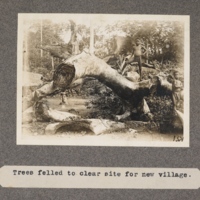
Gilberto
Brazil is a source country for men and boys trafficked internally for forced labor which accounts for most instances of modern slavery in Brazil. It is particularly prevalent in manual labour sectors such as construction, manufacturing, factory and domestic work and occurs in rural and urban areas, mainly through debt bondage schemes. In rural areas workers are immobilised in estates until they can pay off debts often fraudulently incurred; their identity documents and work permits are frequently retained; they are often physically threatened and punished by armed guards and some have been killed while attempting to flee. Debt bondage involves abusive labour contracting schemes operated by contractors known locally as empreiteiros or gatos, often engaged in other types of seasonal labour contracts. Gilberto went looking for work when he was recruited to work in a forest cutting trees. Forced to work long hours with little food and pay, Gilberto tried to leave his situation but was told by the gato that recruited him that he owed him money for the tools, food and transport and had to pay off his debt before he could leave. After five months of malnutrition and witnessing the sexual abuse of young boys, Gilberto ran away.

Chief with wives bringing in fuel by canoe. Taken in creek near Basankusu. Old Abir territory

Trees felled to clear site for new village

Repairing bridge over forest swamp, Kasai – Sankuru District

A loop of a giant vine, Ikelemba forest

Loops of vine in Congo forest

No caption [forest scene]

Drying clothing on the Ikelemba forest after a soaking journey

Clearing the forest to erect a trading factory on the Kasai

Great vines of the Congo forest

Congo forest fruit like luscious grapes – growing on tree trunk

Vines of the Congo forest

A Congo forest fruit, considered by the natives to resemble the imported pineapple, to which they give the same name

Tree ferns, Ikelemba forest
